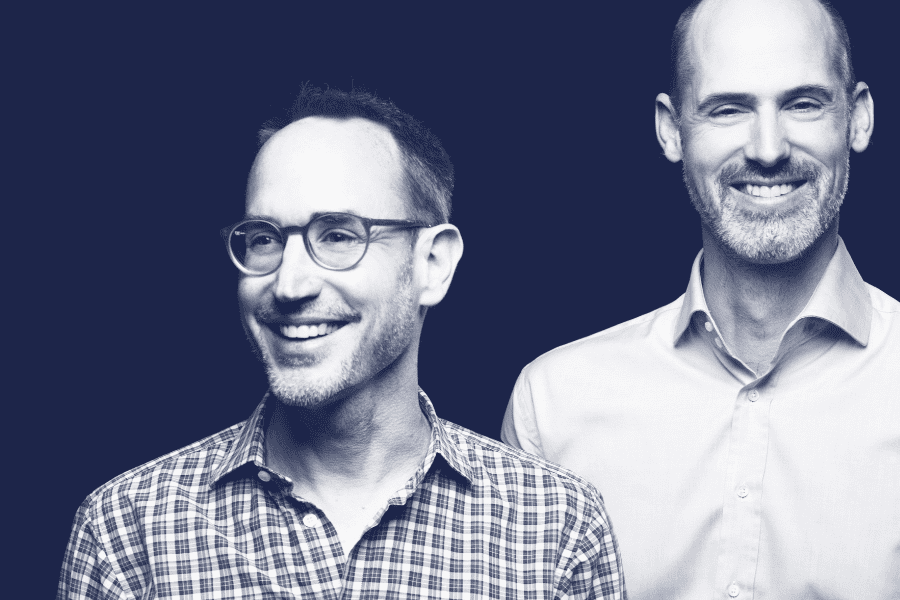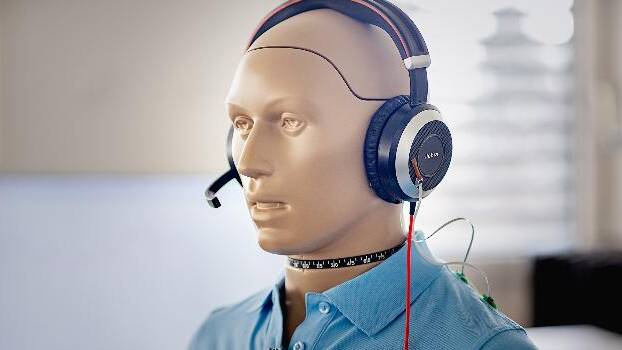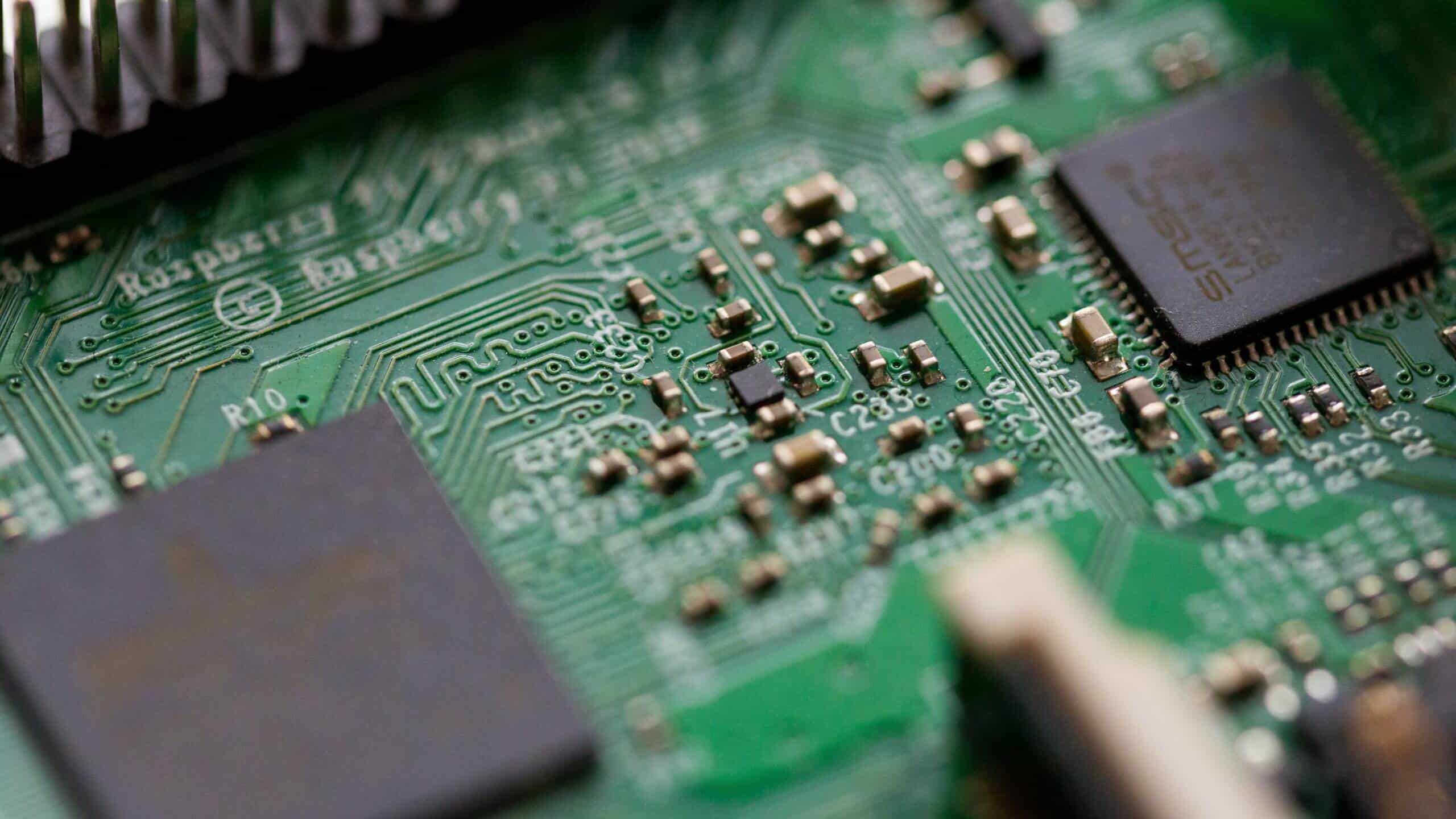Using light instead of electronics to perform complex calculations may pave the way for truly confidential computing. In this interview, Nick New, the founder of startup Optalysys, explains how optical computing is evolving from spotting tanks among trees to enabling competitors to work together in harnessing the power of data that so far couldn’t be shared.

Founder and CEO, Optalysys
Nick has more than 20 years of experience in Fourier Optics. In 2001, he founded the startup Cambridge Correlators based on his research during his Ph.D. in Optical Pattern Recognition. In 2013, he founded Optalysys with hardware engineer Robert Todd to bring the underlying technology to new applications. Nick has been instrumental in raising investment and establishing links with several international academic and commercial institutions, including NASA, MBDA, and British Aerospace.
Optalysys is a startup based in Leeds, UK. It develops optical computing hardware that enables calculations on fully encrypted data. This innovation allows truly confidential computing at scale, with use cases ranging from financial services to healthcare research. As an enabling technology, it has the potential to unlock new markets centered around sharing and processing encrypted confidential data.
Why did you choose to study electrical engineering?
Electronics were a hobby of mine as a teenager. This is also why I was always interested in the perspective of applying new technologies in the real world, and not just doing research. I studied in Liverpool and then did my Ph.D. at Cambridge, where I found an exciting challenge in optical processing. We wanted to exploit the fact that free-space optical systems [a technology that uses light propagating in free space as opposed to light traveling through optical fiber cables] can calculate an important mathematical function, the Fourier transform, through interference. Basically, with this approach that exploits the properties of light, you get maths for free in the sense that these calculations are near instantaneous. The potential of this technology was already obvious decades ago but the rest of the breakthroughs needed to harness its potential – such as the high-speed electrical-optical interfaces – did not exist.
Wait. As far as I understand, computers perform calculations with electricity, with plenty of little 1s and 0s. How can light waves perform a complex mathematical calculation such as the Fourier transform?
Since we’re working with light instead of electronics, the Fourier transform happens really really fast. The simplest way to picture this process is to imagine dropping two stones into a pond. This will create two emanating circles, which will merge at a certain point, and create a new type of wave. That’s the result you’re looking for. Now, the encoding of the input information in light is similar to holography. You shine a light – from a coherent light laser – through a pattern, which encodes the information in the light. This information then gets displayed as an image we see in the distance.
Getting back to your time at Cambridge, how did this initial concept evolve?
There was, at that time, already an application for the technology, namely in pattern recognition. The ability to spot tiny patterns in large high-resolution images was used mainly in defense, for example, to spot camouflaged tanks in such pictures. But the devices used for it were cumbersome and very big – about 1.5 meters long. At the time liquid crystal micro-displays offered the ability to bring the size of the optical systems down and the modulation speeds up – and we saw an opportunity to commercially exploit that method. That was the reason we founded Cambridge Correlators as a spin-out of the university. We were able to shrink these huge systems into something you could fit into your hand.
What happened then?
The startup attracted some angel investors but stayed very small. In 2013, we founded Optalysys to pursue a different commercial direction. But there is a common theme of the past two decades, which is how to integrate an analog optical function inside a digital system [a computer]. We developed optical co-processors using liquid crystal components from high-resolution projectors and were thereby able to put discrete optical systems into a desktop tower case. We were exploring applications in artificial intelligence, more specifically in convolutional neural networks which are used to analyze images. But recent advances in technology have allowed us to shrink the size even more, to a microscopic level. This was possible by moving from discrete optical systems to chip-based silicon photonics. By combining diffraction-based Fourier transform with very high-speed transceivers [a device that converts optical signals to electronic signals], we were able to turn optical computing on its head.
So finally optical computing is small and fast enough to become widely used. What are the potential applications?
I mentioned niche models in AI but there are dozens of other areas to which electronics-based systems aren’t naturally suited, such as numerical solvers used in weather forecasting. With Optalysys, we decided on post-quantum cryptography.
You mean the fact that future quantum computers will be able to break today’s state-of-the-art cryptographic methods and render them useless? Sounds like you arrived at the right time.
The trust in our whole computing system is being questioned by quantum computing. What happens if every encrypted email you send, and every banking transaction is potentially at risk of being exposed?
We have a big problem.
Indeed. But there already is a solution to this problem. There are future-proof encryption methods, and one of them is called lattice-based cryptography.

Invest in Startups
As one of Europe’s most active venture capital investors, we grant qualified private investors access to top-tier European startups. With investments starting at EUR/CHF 10’000, you can build your own tailored portfolio over time and diversify across stages and sectors.
How can we know that these methods will resist quantum computers that haven’t even been built yet?
Because the maths behind them prevents decryption. There is no known way of mapping this type of encryption to quantum computers. But it gets even better. The method we’re working with, called fully homomorphic encryption or FHE, is not only future-proof but also allows us to process data while it is encrypted. This is also why FHE is called the holy grail of cryptography.
Why is it important to be able to work on encrypted data?
Today, encryption is applied to data when it is in storage or in transit. However, before the data can be processed by a computer, it needs to be decrypted and after that, encrypted again. This means that there is always vulnerability in the cloud. As you’re aware, an issue that emerged recently is that governments started to question how reliable the technology of a certain manufacturer of computer network equipment really is, and some even banned this company from providing any critical infrastructure. With FHE, the level of trust in a network isn’t an issue anymore, because the data always stays encrypted. This type of confidential computing offers a myriad of new possibilities such as sharing data between multiple parties. There are other methods currently available that offer this benefit, such as trusted execution environments, which are secure areas in data centers. But the data does not always stay encrypted as this is a feature they cannot offer. FHE will unlock a huge amount of the value in data that is currently not unearthed because there is no way the data can stay confidential.
Could you provide some concrete examples of potential applications of FHE?
There are plenty of really big industries that could start sharing data they cannot today. Think of banking, for example. The banking industry would collectively benefit enormously from sharing data to better analyze fraud patterns. They will be able to do so in the future because they can share personal data that stays anonymized throughout the whole process. The same is true for research in the massive healthcare industry. Confidential computing allows competitors and different actors to work together by aggregating data from different sources to get better insights but also allows one to look far beyond current data protection regulations. It’s even a tool for a different kinds of collaboration and knowledge sharing between countries. Think of the US and Ukraine right now. FHE could allow them to work closer together.
If FHE enables all of these applications, and plausibly also some we cannot even imagine right now, what is still needed for it to become a commonly accepted standard of encryption?
The biggest challenge right now is the amount of processing power needed for FHE. The reason behind this is that when the data is encrypted, noise is brought in intentionally as part of the security feature. Every multiplication and addition that is performed afterward acts not only on the data, but also on the noise. This means that we need to bring the noise level down after every operation. In practical terms, this means that processing speed is slowed down by a factor of one million times, which makes FHE all but impractical right now. This is the challenge we set out to solve. We have devised the ultimate solution for running noise management on optical circuits which will bring the speed back up to the normal level. This will eventually foster the adoption of FHE and unlock the potential of confidential computing.
When will these plans become reality in the form of commercially available products?
2025 is the target for us to produce our first chips. The financing round we’re doing this year will get us to that point. In a matter of a few months, we’ll have precursor systems available with slower speeds that already allow interested parties and end-users to interact with the technology and build interfaces to it.
Two years can go by fast, but you’ve already spent almost two decades working on the technology that got you to this point. If you would have known that it would take that long, would you have become an entrepreneur nonetheless?
Yes. Entrepreneurship is a rollercoaster ride, and it’s never easy to find the right investors and the right application area for technology such as ours. But there is a huge potential that we’re all very excited about. As I explained, our technology is general purpose and could be used for artificial intelligence or computational fluid dynamics. FHE might still be a nascent and challenging market, but believe me, all the big companies are already looking at it because it has applications in many different industries. The standard authorities and regulators are pushing for it as well. We still need to overcome several hurdles, but FHE has the potential to become the dominant encryption technology for cloud and even edge processing. Our Enable chip technology will unlock that market.
Written by
WITH US, YOU CANCO-INVEST IN DEEP TECH STARTUPS

Verve's investor network
With annual investments of EUR 60-70 mio, we belong to the top 10% most active startup investors in Europe. We therefore get you into competitive financing rounds alongside other world-class venture capital funds.
We empower you to build your individual portfolio.
More News
16.01.2023
“We want our technology to be in every headphone”
Our portfolio company AVAtronics recently showcased its noise canceling technology in Seoul. Verve Ventures was also on site and had a chance to catch up with CEO Jeyran Hezaveh and talk about AVAtronics’ ambitious plans to conquer the headphones and hearables market.
12.01.2023
Why a new generation of chips are needed for AI
AI models rely on the quick processing of massive amounts of data that classical computing circuits were just not designed for. Professor Luca Benini of ETH Zurich tells us why it's urgent to tackle this challenge and how Dutch startup Axelera is aiming to solve it.
11.10.2022
“The future is climate tech”
Inderpreet Wadhwa left a comfortable career in Silicon Valley to found a multibillion solar power startup in India and now supports the next generation of climate entrepreneurs to realize their ambitions.
Startups,Innovation andVenture Capital
Sign up to receive our weekly newsletter and learn about investing in technologies that are changing the world.




